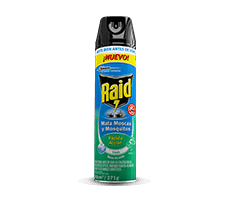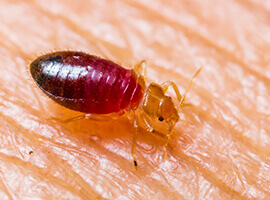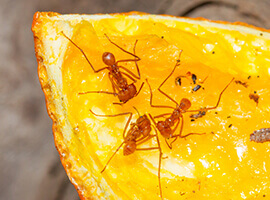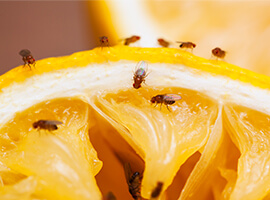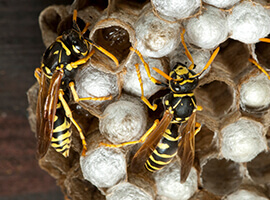
Removing and Preventing Bugs After Moving to a New Home
Moving into a new home can be an exciting but stressful experience and the last thing you need is bugs making themselves feel at home.
Uninvited pests can get in the way of creating a warm, welcoming space for family and friends in your new home. Follow these simple precautions when you move to help keep bugs out.
Things to do
Secure the perimeter
Inspect the perimeter of the home and cover up any cracks and openings to prevent bugs from entering your home. If you see any holes, caulk them or conduct repairs to cover them up.
Don’t ignore the door
Cover up any unsealed gaps in your door and install a door sweep for added protection. Add weather stripping or door-seal kits to the frame to keep insects from entering along the sides or top of the door.
Don’t bring bed bugs with you
Purchase mattress encasements for each mattress and box spring and cover up any exposed fabric to ensure you don’t pick up anybed bugsin transit. Launder all clothes and fabrics on high heat before moving and seal them in bags labelled “clean.”
Keep a clean kitchen
The kitchen attracts a wide variety of insects and open or improperly stored food can quickly turn the kitchen into a breeding ground for bugs.Antsgo after the sweet stuff. Indian meal moths (a.k.a. “grain moths”) love rice, flour, cereal, and nuts. Flour beetles prefer a broad range of food including flour, cake mixes, dried fruits, nuts, chocolate, and spices.
Make sure your food is stored in tightly sealed containers and purchase small packages that can be used up in a shorter period of time.
Keep your floors and counters clean and clear of food crumbs.
We know bugs
Our scientists raise 15 million bugs each year at theInstitute of Insect Science for Family Health—from common house flies to creepy cockroaches to slithering silverfish. Our mission is to study aspects of bug behavior and development that can assist in improving methods of insect control to help protect you and your home from unwanted pests.
Get a screen
If you enjoy fresh air and natural ventilation in your home, install a screen mesh on your doors and windows. A 20-mesh or finer will keep out most household pests. If your home already has screens, ensure that there are no holes or tears that would allow insect entry.
Dry up damp areas
Eliminate pooled water around the home to prevent mosquitoes from laying eggs. Aerate the lawn to ensure proper water absorption in the soil. Cover drainage and ensure that channels such as drains and gutters flow smoothly and aren’t blocked by leaves and waste. If you have an outdoor pool, ensure that it is chlorinated.
Lastly, inspect the surroundings to ensure that rainwater doesn’t collect in idle pots, tanks, and tires.
Clean the surroundings
Insects are attracted to food sources and open and uncovered trash around your home serves as an open invitation to insects likemosquitoes, flies, roaches, and wasps. Ensure that garbage, recycling bins, and composting food matter are closed and tightly sealed. Also, clear up trash near and around the home and take precautions to prevent open dumping of waste.
Kill the bugs you see
Raid has a variety of products designed to help you control infestations as soon as you spot them—so small bugs don’t become a big problem in your new home.

